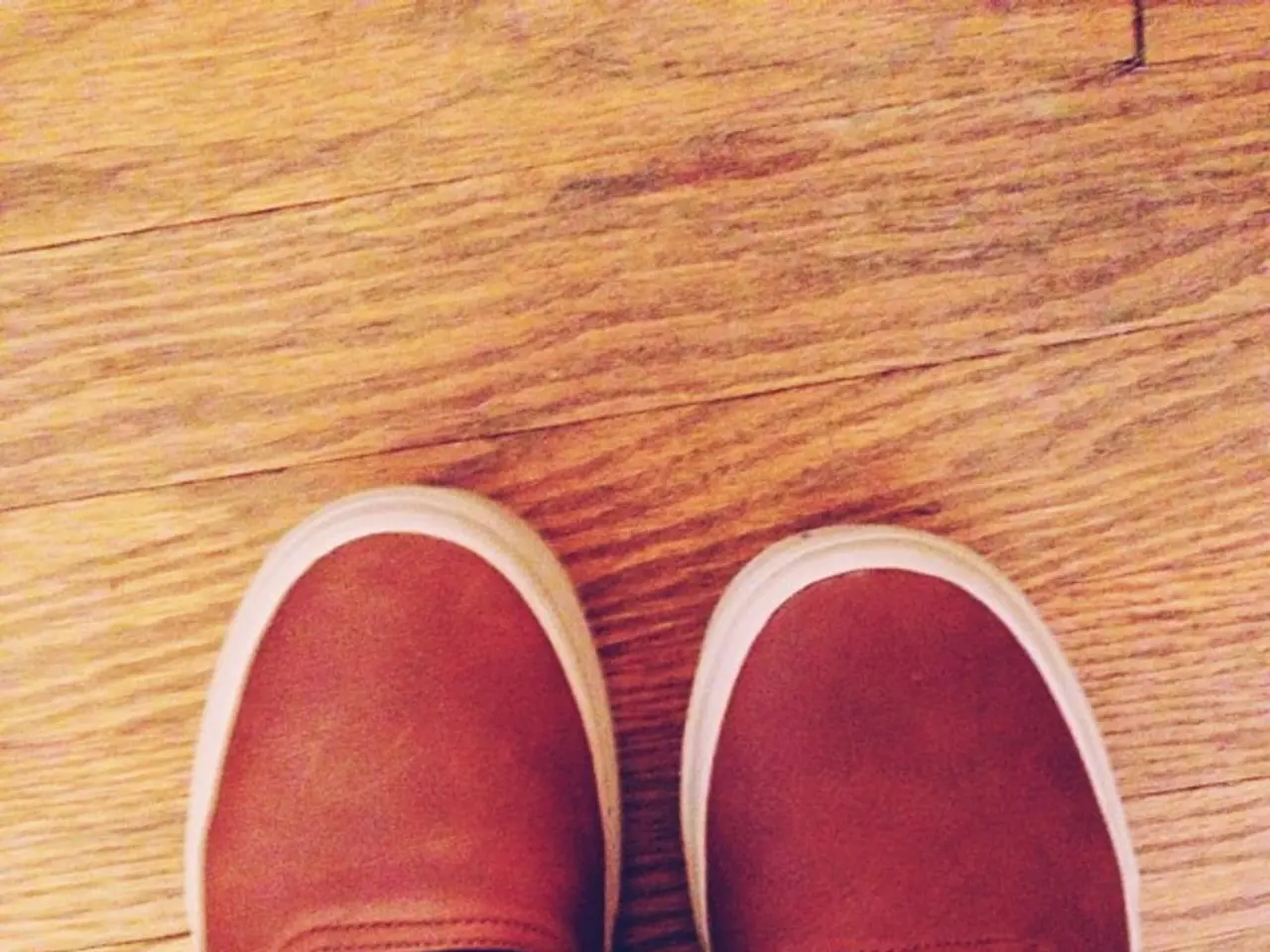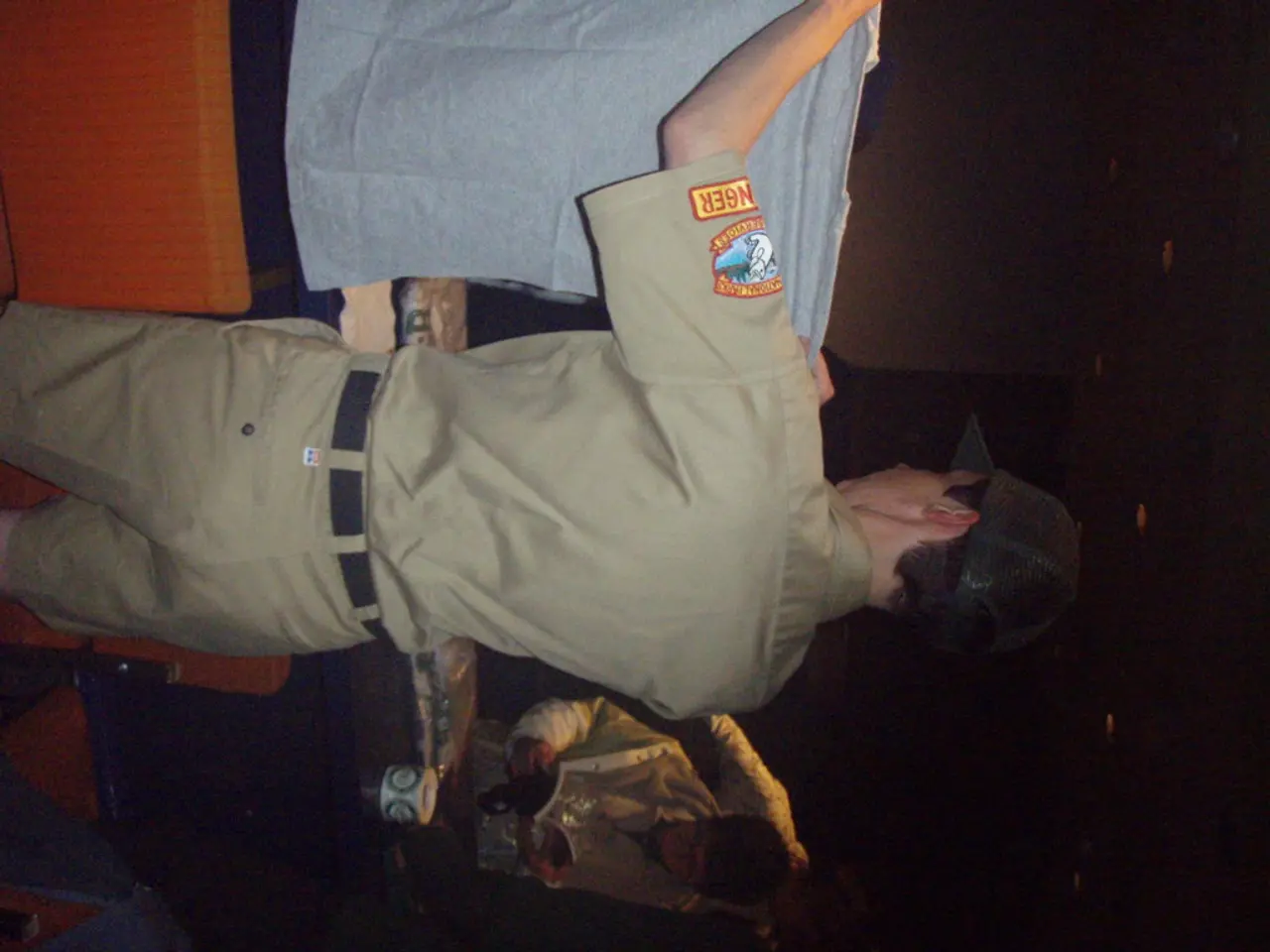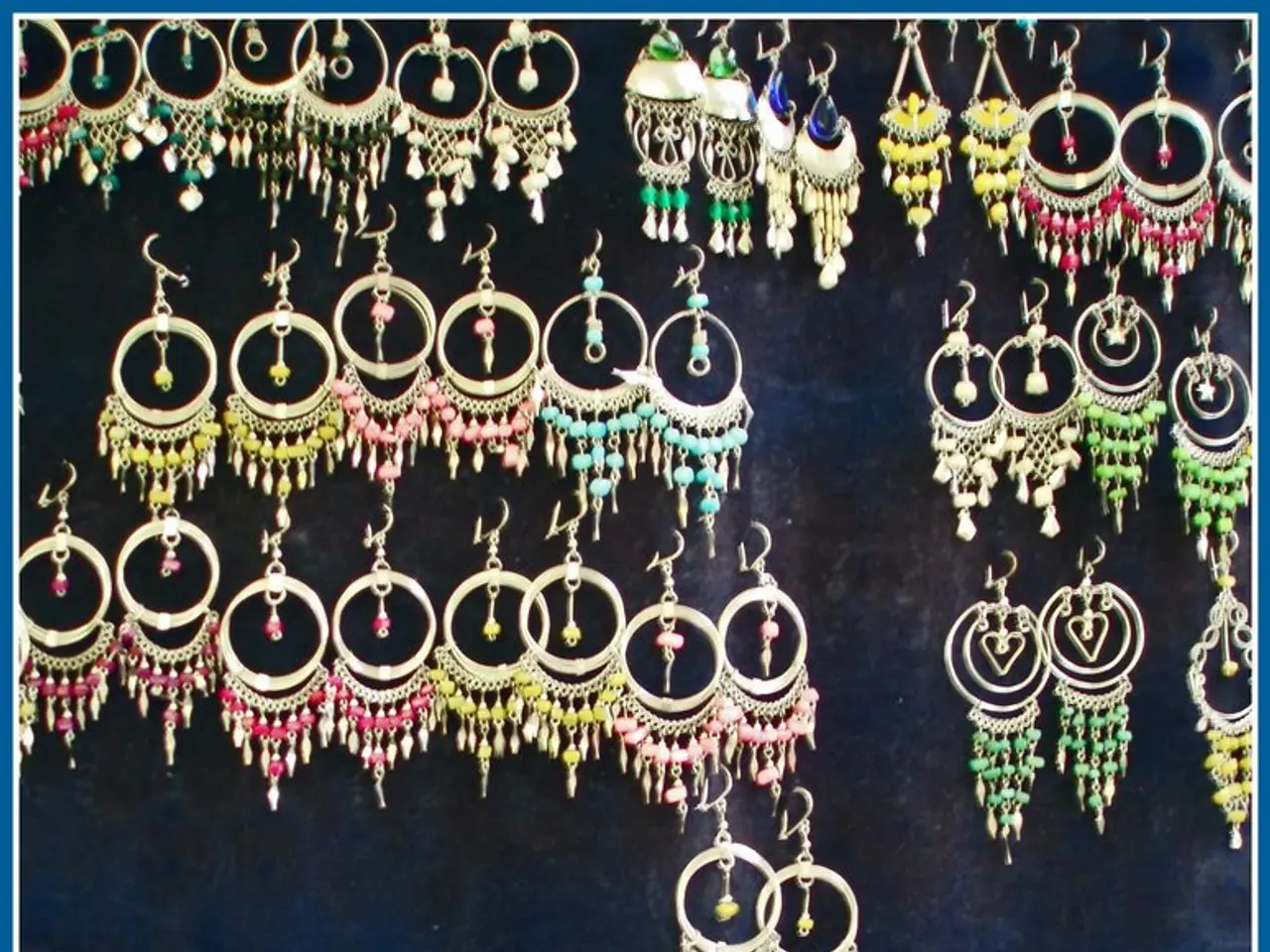Foot troubles: Signs, reasons, and solutions
Foot problems can be a common inconvenience for many individuals. In this article, we will explore various foot conditions, their causes, symptoms, treatments, and prevention methods.
Athlete's foot, a fungal infection, thrives in warm, damp environments. Symptoms include a rash between the toes, itching, scaling, and blistering. Treatment typically involves antifungal creams, sprays, or oral medications, and prevention tips include keeping feet dry and wearing flip-flops in public showers.
Bunions, bony lumps that develop on the inside of the foot beside the big toe, can cause the big toe to turn slightly inward. Common causes include genetics, tight shoes, and arthritis. Treatment may involve wearing wider shoes, orthotics, or surgery, and prevention tips include wearing proper footwear and avoiding tight shoes.
Diabetic neuropathy, nerve damage in people with diabetes, can affect the feet and legs. Symptoms include numbness, tingling, and reduced sensation, increasing the likelihood of cuts or injuries. Managing diabetes and blood sugar levels can help treat diabetic neuropathy, and regular foot exams are essential for prevention.
Ingrown toenails occur when the toenail starts to grow into the nail groove, causing pain and discomfort. Common causes include poor nail trimming and tight shoes. Treatment may involve proper nail clipping, surgery if needed, and prevention tips include trimming nails straight and wearing proper shoes.
Plantar fasciitis causes pain on the bottom of the heel, often in the morning. The condition occurs when the plantar fascia on the bottom of the foot becomes inflamed. Treatment includes resting the foot, applying ice, taking NSAIDs, stretching the foot, and wearing supportive footwear.
Blisters are raised fluid-filled pockets in the skin, often caused by long periods of walking or ill-fitting shoes. Treatment includes keeping the area clean, protecting the area, and avoiding popping the blister.
Corns are patches of thickened skin that commonly develop on the balls of the feet and the tops and sides of the toes. Common causes include uncomfortable footwear and pressure. Treatment may involve pads, proper footwear, and removal, and prevention tips include wearing roomy shoes and using padding.
Heel spurs, or calcaneal spurs, are bony growths that can develop on the heel, often due to long-term strain on muscles and ligaments. Treatment may involve surgical removal if the spur causes pain.
Claw toe, or claw foot, is when the first toe joint points up and the second toe joint points down, often due to nerve damage. Treatment can include wearing shoes with wide toe boxes, toe exercises and stretches, and in some cases, surgery.
Metatarsalgia is pain in the ball of the foot, often caused by arthritis, bunions, wearing high heels, or having overweight. Treatment includes rest, orthotics, ice, PT, and supportive shoes with cushioning.
To gather information on these foot problems, you can use reputable medical and podiatry websites, consult with healthcare professionals, and browse medical encyclopedias and health portals. By leveraging these resources and strategies, you can find comprehensive, up-to-date information on the conditions listed.
Additional tips for maintaining foot health include choosing shoes with proper arch support and firm soles, keeping feet clean and dry, and having regular foot checks, especially for diabetics. If symptoms persist, consult a podiatrist for diagnosis and advanced treatment options.
- Psoriatic arthritis, a type of inflammatory arthritis, can lead to foot problems like pain, swelling, and joint deformities.
- Colitis, a medical condition that causes inflammation in the colon, may affect foot health as well, causing symptoms like diarrhea, weight loss, and neurological problems, which can potentially lead to diabetic nephropathy or neuropathies.
- Bipolar disorder, a mental health condition characterized by periods of mood elevation and depression, can impact foot health indirectly, as depression may lead to reduced activity and potential foot health issues, while medications used to treat the disorder can cause weight gain, increasing the risk of obesity and foot conditions like flat feet.
- Diabetes, a chronic medical condition, can cause complications like diabetic nephropathy, neuropathies, and poor blood circulation, which can lead to foot problems such as ulcerative or fungal infections of nails.
- Flat feet, or fallen arches, are often caused by genetics but can also result from conditions like rheumatoid arthritis or diabetes.
- Obesity, characterized by an excess amount of body fat, can lead to various foot problems, including plantar fasciitis, gout, and bunions.
- Dermatitis, a general term for inflammation of the skin, can cause conditions like dry skin or eczema on the feet and can also exacerbate fungal infections like Athletes foot.
- Neuropathies, caused by nerve damage, can affect the feet and legs, making it difficult to feel pain or other sensations, potentially leading to more severe foot problems.
- Gout, a form of arthritis, is caused by the buildup of uric acid in the joints, often in the big toe, causing intense pain and swelling.
- Asthma, a chronic respiratory condition, can sometimes affect feet indirectly, as the use of certain medications like steroids and theothropamides can cause side effects like weight gain and increased risk of flat feet or bunions.
- Atopic dermatitis, a type of eczema, is a common allergic disorder, and in some cases, it can affect the feet, causing dry and itchy skin, particularly in areas prone to fungal infections.
- Science, the systematic study of the physical and natural world, can help us better understand the causes and treatments of various foot conditions, contributing to improved health and wellness.
- Medical-conditions, such as bunions, heel spurs, and plantar fasciitis, can lead to long-term foot discomfort if not treated properly.
- In addition, footballers' foot, a type of fungal infection, is another common foot condition caused by playing sports on damp grass or in dirty shoes.




